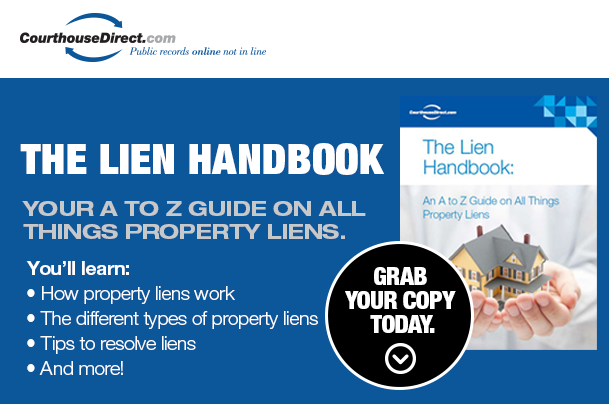 In real estate terms, an encumbrance is a claim on property by an entity other than the title-holder. Encumbrances are obstacles to the use and sale of property by the title-holder and can be considered a cloud on a title.
In real estate terms, an encumbrance is a claim on property by an entity other than the title-holder. Encumbrances are obstacles to the use and sale of property by the title-holder and can be considered a cloud on a title.
The term encumbrance literally means a burden or impediment. When speaking of property, it is used to describe reasons why the owner may not control all or a portion of land to which he or she is entitled.
Here is an explanation of the impact of encumbrances, how they are used in accounting, and the various types of encumbrances you may encounter when dealing with real estate.
The Impact of an Encumbrance Upon Real Property
The impact of an encumbrance depends on the type and why it is in place.
- Easements and liens make a parcel unmarketable.
- Zoning laws and environmental regulations limit usage and improvement opportunities.
- Encroachment creates the potential for confrontation between the title-holder, the encroaching party, and the buyer.
- A lease limits the use of the property by the title-holder for the duration of the lease.
If you are selling property, not only must you determine if there are any encumbrances to the sale, you may be required by law to disclose encumbrances to potential buyers. If you are purchasing property, perform your due diligence by identifying potential encumbrances before closing the deal.
Using Encumbrances in Accounting
In accounting, encumbrances are addressed by setting aside assets to pay for anticipated liabilities. Any assets set aside for potential encumbrances cannot be used for any other purpose. While the use of encumbrance accounting is primarily a financial tool to prevent overspending the budget, a company that buys and sells property frequently may wish to create a budget to handle issues created by encumbrances on a desired piece of property.
Types of Encumbrance: Mortgage
If you think about it, a mortgage is the ultimate encumbrance on property. The bank or loan institution holds the title until the mortgage is paid in full. A mortgage acts as a real estate property lien to ensure the borrower repays the loan.
The holder of the mortgage has the right to foreclose and sell the property to recoup unpaid mortgage debt while evicting those living on the property. A mortgage is, in effect, a lien on the property placed by a lending institution.
Types of Encumbrance: Lien
Unlike a lease, a lien is an encumbrance placed upon the property as a form of security. A lien gives a creditor the right to seize the property as collateral for unmet financial obligations. To recoup the debt, the lien-holder can sell the property to settle a loan or other debt created by the original title-holder.
One example of a lien is a tax lien, which is placed by a government entity for non-payment of taxes by the title-holder. A tax lien is a method of forced tax payment. In the U.S., a tax lien comes ahead of any other lien or financial commitment on the property.
Another example is a mechanic’s lien. If a contractor has performed services on the property yet was not paid, the contractor can place a mechanic’s lien on the property to force payment of the service debt.
Types of Encumbrance: Lease
A lease is a contract or agreement allowing an entity to rent a property from the title-holder for a specific time and monetary fee. It is considered an encumbrance because the property owner does not have free and clear use of the leased property for that period, nor is the title relinquished. The lease agreement encumbers the title-holder’s use of the property.
Types of Encumbrance: Easement
An easement is the portion of property set aside or reserved for a party, such as a municipality, to use or improve, or to prevent the title-holder from using or improving the property in particular ways.
- Affirmative easements allow a party other than the owner to use or make changes, such as when a utility requires an easement to install a sewer line. Public sidewalks and pathways may be carved out using an easement.
- Easement-in-gross is an encumbrance for an individual other than the owner to use property, but that right does not pass beyond that individual.
- Negative easements restrict the owner from making changes to the titled property, like building a shed that blocks a neighbor’s view of the lake.
An easement-in-gross may allow a neighbor to use a pathway across the owner’s field to reach the bus stop, but once the neighbor sells the home and moves, the new neighbor does not automatically receive the same right. Easements-in-gross are often casual arrangements between the owners of adjacent properties.
Types of Encumbrance: Restrictive Covenant
A restrictive covenant is a clause placed by a seller into a buyer’s deed to restrict the use of the property, even though the seller no longer holds the title. A restrictive covenant can specify anything as long as it is legal and both parties agree to it.
For example, a restrictive covenant may require the main structure to continue to be used as a physician’s office, or that a historic tree on the property remain uncut.
Types of Encumbrance: Encroachment
Encroachment is rather like an anti-easement-in-gross. Instead of an agreement between the title-holder and the user, an encroachment interferes with or intrudes upon property held by another. Encroachments include both nuisances (tree limbs hanging over a neighbor’s property line) and trespass (a structure built over the property line).
An encroachment can impede the use of both properties until it is resolved. The title-owner is encumbered from using the property that is impacted by the encroachment. The encroaching user does not own title to the land in use.
An encumbrance impedes the use of real property. In some cases, it is a slight impediment that can be resolved quickly, while in others it proves to be obstructive. An encumbrance can be negative or positive, depending on how it was created and the circumstances under which it operates.
It's essential to identify encumbrances when researching property sales and purchases to determine if there is any reason a title is not clear.























